In 1936 South Australia celebrated a centenary of European settlement. Despite continuing economic recession, government and community groups organised a full program of parades, sporting events and conferences that spanned the entire year. The mood throughout was upbeat. Nothing was to be allowed to detract from the general message of steady expansion and advancement. The celebrations culminated in a huge ‘Pageant of Progress’ that made its stately way through the city on 22 December, stretching over two miles (3.2 kilometres) from start to finish. Nothing was said about Aboriginal dispossession, although there were muted Aboriginal references in several events.
South Australia in 1936
The centenary fell at a difficult time for the state. South Australia was hit hard by the Great Depression of 1929-34, and emerged only slowly from its devastation. The 1933 Census recorded a staggering official rate of over 18% unemployment in the male workforce and this improved only slowly until the outbreak of the Second World War. In 1936 many families were living well below the poverty line. Nevertheless the Butler Liberal Country League (LCL, conservative) government that ousted Labor in 1933 was determined to stimulate industrial development in the state, convinced that this was the key to future economic growth. In an innovative partnership with private industry, it instigated a determined program to entice companies to move to South Australia, and established a new statutory authority, the Housing Trust of South Australia, to assist in housing workers where industry needed them. To further cement their hold on power the Butler Government amended the Electoral Act in 1936 to create a 2:1 electoral advantage for rural seats. This electoral ‘malapportionment,’ or gerrymander, kept the LCL in government until 1965.
The celebrations
In outlining his program for the year, the Director of Centenary Celebrations waxed lyrical on the preceding century, describing it as ‘one hundred years filled with romance and adventure’. The festivities were launched in January with the Australian National Games, which attracted athletes from all over the nation. It seems an odd choice of timing for an athletic competition, but apparently no one was deterred. Next was the Centenary Great Eastern Steeplechase, held at Oakbank and a Centennial Empire Exhibition, held in the new Centennial Hall at Wayville. Some 700,000 people attended this exhibition. On 27 July residents of Kangaroo Island marked the centenary of the arrival of the first of the South Australian Company’s ships at Nepean Bay with a special ceremony, presenting a challenge to Holdfast Bay’s assumption of precedence. There was then a brief lull until September. This month was very busy however. The combined Protestant churches held a National Thanksgiving Service at Adelaide Oval, the Women’s Centennial Congress was held, and in association with the Congress, a Floral Festival and Floral Pageant were organized. The Floral Festival was thought to be the most attractive of all the festivities and a huge crowd lined Rundle Street to see it pass by. Also in September was the South Australian Eisteddfod.
The Pageant of Empire
The program moved towards its climax in late November. On 27 and 28 November South Australia’s school children presented a Pageant of Empire. This extraordinary event was the brainchild of Miss Adelaide Miethke, redoubtable Inspector of Schools, and outstanding organizer. In five acts over the two days, Miss Miethke assembled some 14,000 costumed children in a series of patriotic tableaux, directing the whole and keeping order with her ‘stentorian voice’. There were five tableaux in all – one each for the British Isles, Canada, India and Australia, before a final tableau in which Britannia ‘gathered her different peoples around her’. No stereotype was spared. The children were dressed as roses, daffodils, Scottish thistles, shamrocks, Grenadier Guards and yeomen of the guard. But there were also Aboriginal people, North American Indians, Indian dancing girls, rajahs, bunyips, kangaroos and soldiers answering the call to arms. The culminating piece presented the centenary’s main message, ‘Peace and Goodwill’, in the centre of a huge circle. Some 13,300 children were positioned on the oval for this tableau! Six hundred and eighty ‘Girls of the Cross’ formed the word ‘Peace’, 900 ‘Wattle Blossoms’ made up the year 1936 and 1,100 ‘Roses’ represented ‘Goodwill’. A committee of 700 co-ordinated the thousands of mothers who made the costumes. The whole was described as a ‘brilliant and heart stirring spectacle’. In choosing her message Miss Miethke, a member of a German Australian family, was no doubt conscious of the clouds gathering over Europe in 1936. After their experiences during the First World War, most South Australian Germans dreaded the possibility of another conflict with Germany. Several costumes from the Pageant of Empire preserved in the State History Collection.
The Pageant of Progress & final events
December 1936 saw an orgy of events programmed in a Special Centenary Carnival, held between 18 and 31 December. Amongst the events were a Brisbane to Adelaide air race, an aerial pageant at Parafield, speed-car and motorcycle racing at Camden Motordrome, the Centenary Christmas Handicap at Cheltenham Racecourse, a trooping of the colour and military tattoo at Wayville and an interstate car rally that finished in Adelaide. Then came the pièce de resistance – the Pageant of Progress. Here was patriotic spectacle writ large. With 236 entries, stretching over two miles in length, the pageant wound its way through Adelaide on 22 December. Organizations from the defence forces to the Mothers and Babies Association were represented, but there were also floats in sections entitled ‘Historic’, ‘Exploration’ and ‘Civic’, many redolent with allegory. The floats were photographed by the Government Photographic Department, and we show some of these photographs here. After a busy series of events in the week leading to Christmas (including a Boy Scouts ‘Corroboree’ at Belair and a Girl Guides Camp at Goolwa), the by-this-time-surely exhausted citizens of Adelaide gathered for the now-traditional Proclamation Ceremony at Holdfast Bay, including a special re-enactment of the reading of the first Proclamation. But there was one more event to come. On 31 December the Henley-on-Torrens Regatta was held, concluding with a fine display of fireworks. Against the backdrop of Elder Park images of Colonel William Light and the State’s Centenary Badge entranced the watching crowd. And with this patriotic spectacle South Australians finally put celebrations aside.
A Whiff of Scandal
Miss Miethke’s earnest appeal for ‘Peace and Goodwill’ was tested closer to home, when scandal erupted over a sponsored visit to Adelaide of the Ballet Russes during the centenary year. The ballet was not part of the official program. Indeed the famous company did not intend, originally, to include Adelaide in its tour to Australia. However when the Butler government learned of this it took the extraordinary (for the 1930s) step of sponsoring the company to come, purchasing an additional 500 tickets which it distributed to politicians, their friends and families. In the prevailing straitened economic times this was too much, especially as it emerged that 700 mothers of the children participating in Miss Miethke’s pageant had been refused free tickets on the grounds of expense. There was much outraged protest which, secure in its new gerrymander, the Butler Government simply ignored. A glittering three week season duly opened at the Theatre Royal on 13 October and played to an audience that would be the envy of many contemporary dance companies. Some 23,000 people attended, indicating that 22,500 South Australians trumped up the (considerable) price of a ticket. Apart from this, cultural events were thin on the ground in the centenary program, which clearly tended towards sporting events and public spectacles.


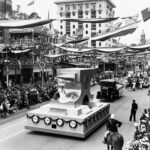

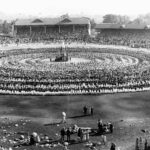
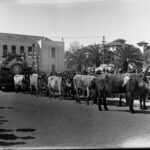
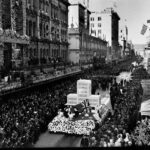
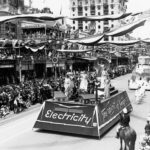
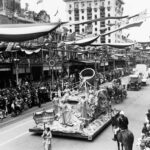
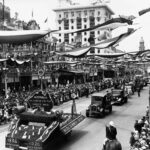
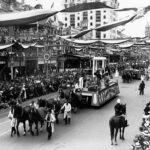
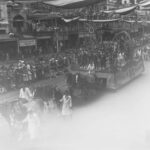
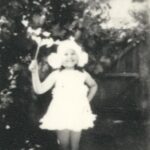
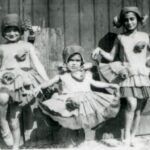
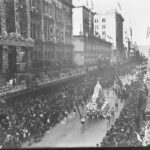

Comments
2 responses to “Centenary Celebrations 1936”
I was looking for this celebration as I have a small plastic powder compact and written round the edge of this is “South Australia Centenary 19?6” and purely out of interest I wanted to know the exact year. Now I believe it to be 1936. Now I would like to know what was being celebrated. Thank you
Hi Enid, 1936 marked the centenary of European settlement. So people were marking 100 years since the British colonised the area and it became known as South Australia. There is more information in the article above and if you click on the ‘Sources’ tab there are other places you can find information as well.